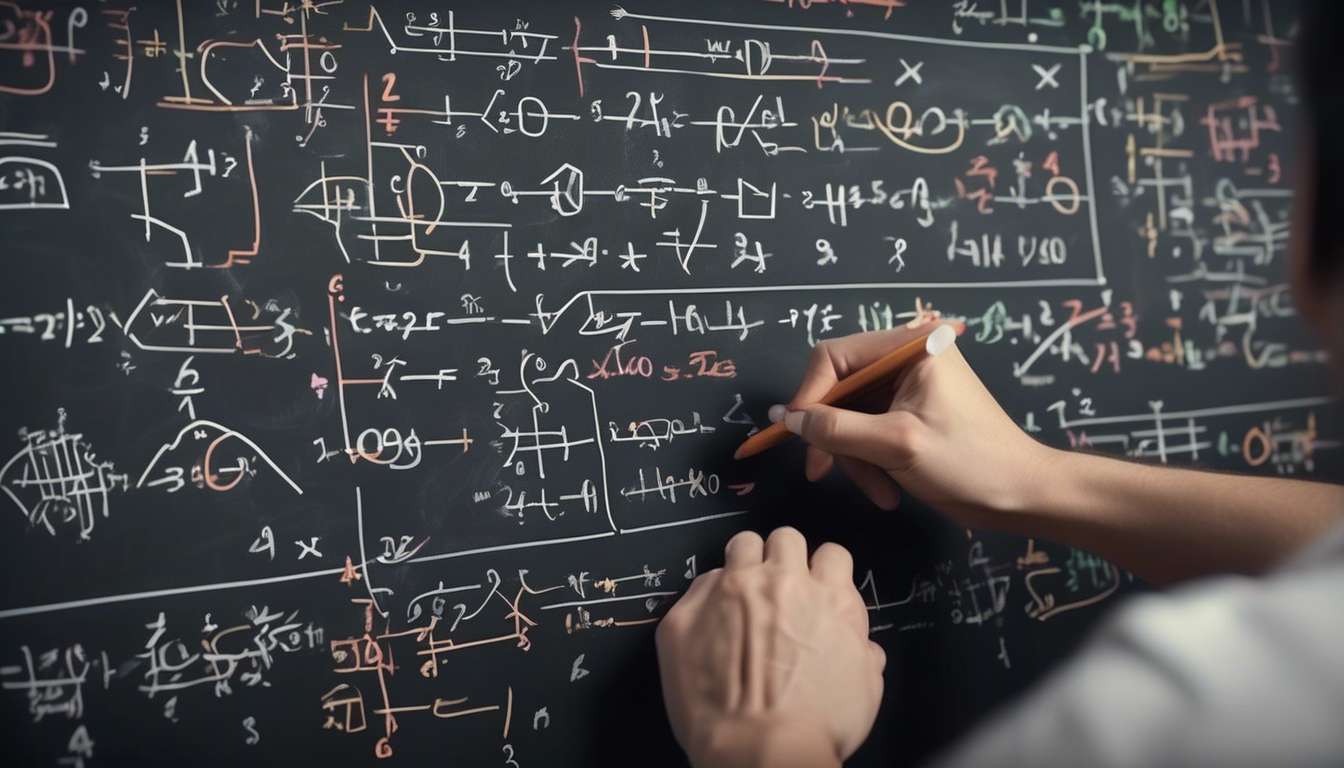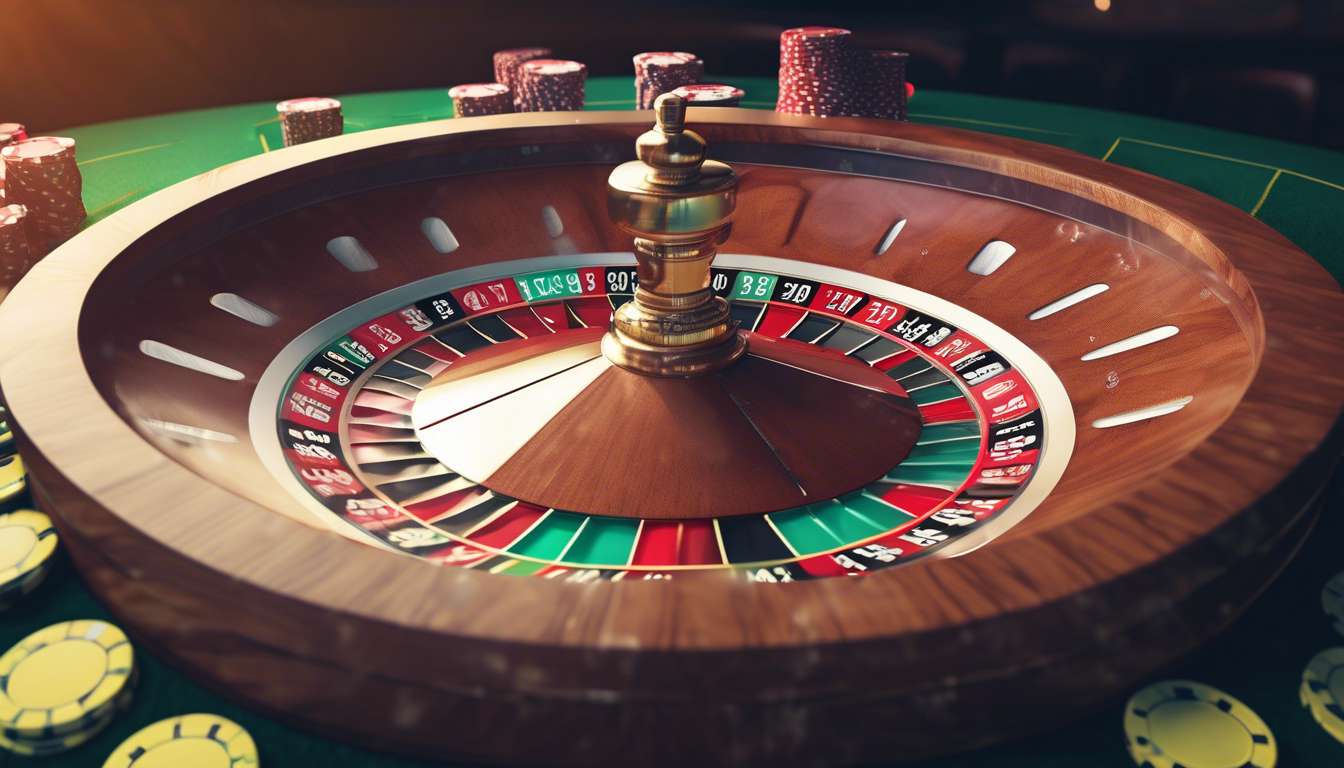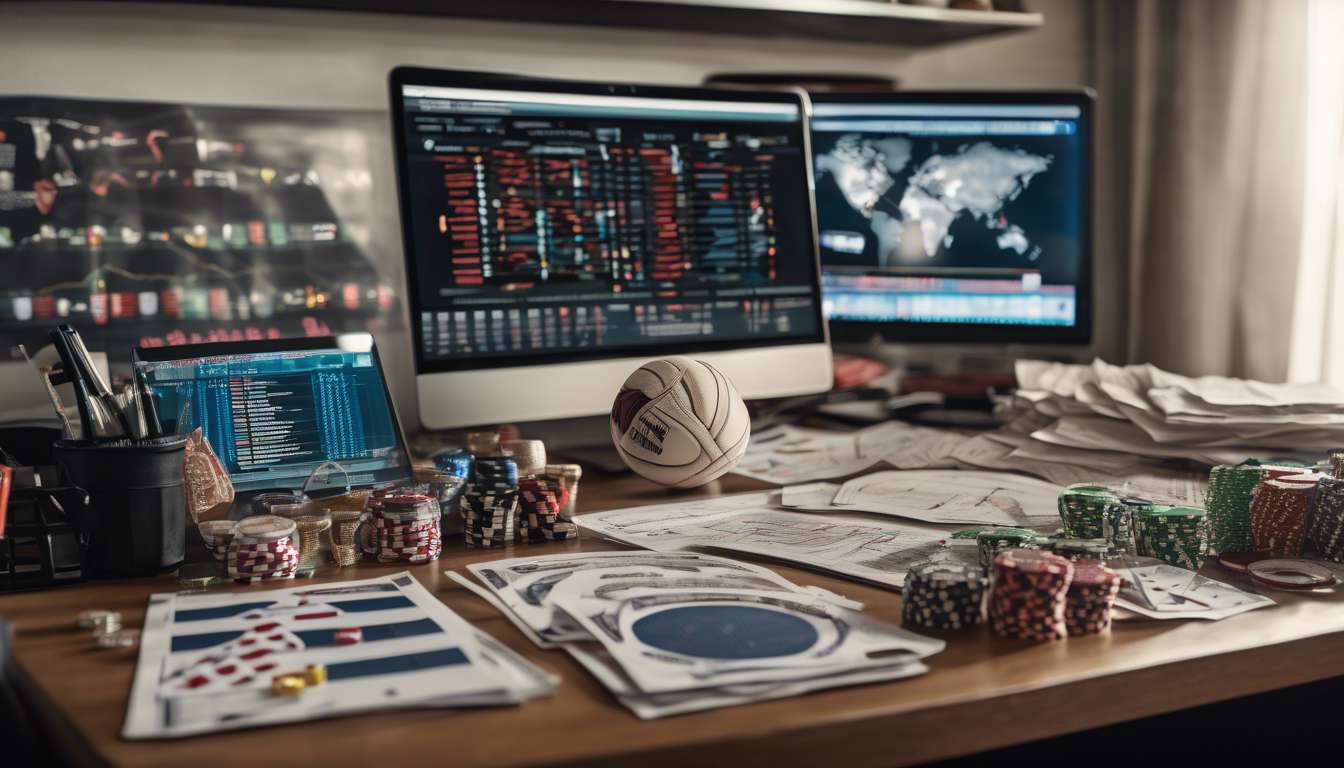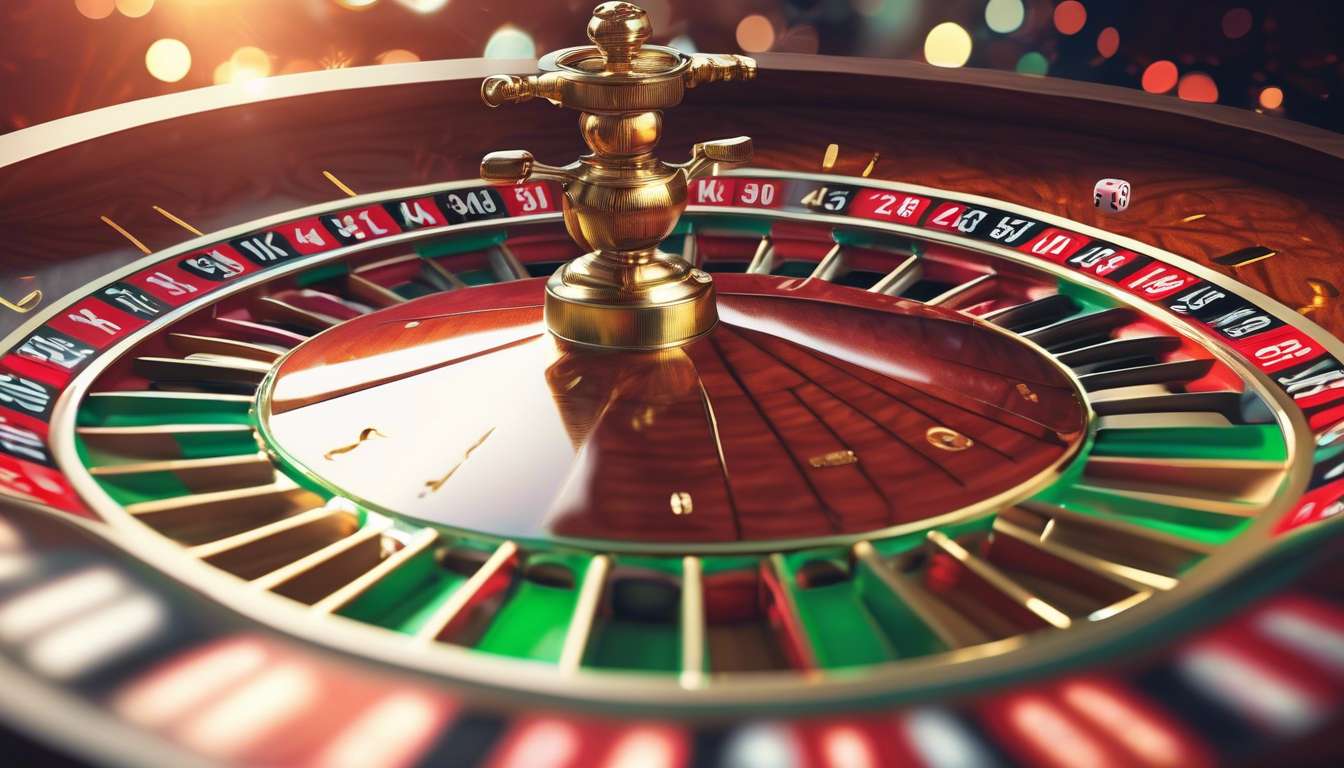In our journey to understand the world of sports betting, one aspect that often intrigues us is how betting odds are calculated. At first glance, these numbers might seem like a complex code, but once we delve deeper, we discover that they are grounded in logic and probability.
Our aim in this article is to unravel the mystery behind these odds, providing a straightforward and easy-to-understand guide. Together, we will explore the different types of odds and learn how they reflect the likelihood of a particular outcome.
Types of Odds:
-
Fractional Odds:
- Commonly used in the UK.
- Represented as fractions (e.g., 5/1).
- Indicate the profit relative to the stake.
-
Decimal Odds:
- Popular in Europe and Canada.
- Expressed as a decimal number (e.g., 6.00).
- Show the total payout including the original stake.
-
Moneyline Odds:
- Common in the United States.
- Presented as positive or negative numbers (e.g., +500 or -200).
- Reflect the profit on a $100 bet or the amount needed to wager to win $100.
By understanding the calculations behind these odds, we empower ourselves to make more informed decisions when placing bets. Whether we’re seasoned bettors or just curious novices, gaining insight into how odds are determined can enhance our appreciation of the betting process.
Let’s embark on this enlightening journey together and become more confident in our betting endeavors.
Fractional Odds Explained
Fractional Odds Overview
Fractional odds, commonly used in the UK, represent the ratio of profit to the stake. These odds are presented as two numbers separated by a slash, like 5/1.
Understanding the Numbers
- For example, with odds of 5/1:
- For every £1 wagered, you gain £5 in profit if you win.
Significance in Betting
Understanding odds and probability is crucial in the world of betting. Bookmakers use fractional odds to reflect their assessment of an event’s outcome. They consider various factors to set these odds, ensuring their own profit while providing bettors with opportunities.
Factors Considered by Bookmakers
- Historical data
- Current conditions
These factors give insight into the likelihood of specific results.
Community and Strategy
Together, we can navigate this intriguing landscape, finding camaraderie in shared experiences and strategies. Exploring probabilities and odds enhances our sense of belonging in the betting community.
Decimal Odds Demystified
Decimal Odds Overview
Decimal odds are a popular betting format in Europe and Australia, known for their simplicity in displaying potential returns from a bet. They allow bettors to easily see the amount they stand to win for every unit wagered, fostering a sense of community among those who value clarity and precision.
Understanding Decimal Odds
- The odds represent the total payout, not just the profit.
- For instance, with odds of 2.50, for every dollar bet, the total return would be $2.50. This amount includes the initial stake, making it easy to calculate potential returns.
How Bookmakers Set Decimal Odds
Bookmakers determine these odds based on the probability of an outcome:
- A lower decimal number indicates a higher probability of the event occurring.
- Conversely, a higher decimal number suggests a less likely event.
Benefits of Decimal Odds
By understanding decimal odds, bettors can:
- Make more informed wagers.
- Feel connected to a wider betting culture.
Embracing this shared knowledge can enhance the betting experience and strengthen the sense of community among bettors.
Moneyline Odds Decoded
In the world of sports betting, moneyline odds offer a straightforward way to gauge potential winnings by focusing on the likelihood of an event’s outcome. Moneyline odds simplify the betting experience by showing how much one can win based on a $100 wager. Understanding these odds connects bettors within a community, enhancing the shared experience.
When examining moneyline odds, two key symbols are commonly observed:
-
Plus (+) Sign: Indicates the underdog. It shows the profit on a $100 bet.
-
Minus (-) Sign: Represents the favorite. It shows the amount required to stake to win $100.
Bookmakers use these signs to balance the probability of each outcome, ensuring they can cover payouts while maintaining a profit margin.
By using moneyline odds, bettors gain insights into the probability of an event, making it easier to make informed decisions. Embracing this common language boosts collective betting confidence.
Probability and Odds Relationship
Understanding the relationship between odds and probability is crucial for making informed betting decisions. When we examine odds, we are not merely looking at potential winnings; we are also seeing a reflection of the probability of an event occurring.
Bookmakers use probability to set odds, ensuring they remain profitable while offering us a fair chance. Odds convert probability into a format that is easy to interpret and compare. For instance, if a team has a 25% chance of winning, the odds offered might be 3/1. This means:
- For every dollar we bet, we stand to win three if the team triumphs.
- It serves as a way to gauge the likelihood of an outcome while considering the potential return.
By understanding how bookmakers derive odds from probability:
- We can navigate the world of betting more confidently.
- We are empowered to spot value bets.
- We feel more connected to the community of informed bettors.
Let’s embrace the odds and probability relationship as our guide. This knowledge not only enhances our betting strategy but also deepens our engagement with the betting community.
Factors Influencing Betting Odds
Several key factors shape betting odds, and understanding them helps us make smarter wagers.
1. Probability of an Event:
- The probability of an event occurring is a major influence on the odds.
- Highly likely outcomes usually offer lower returns.
- Less probable events come with higher odds, promising bigger payouts.
2. Performance and Form:
- The performance and form of teams or individuals significantly impact the odds.
- A team on a winning streak might see their odds shorten.
3. External Factors:
- External factors like injuries, weather conditions, and home advantage are also considered.
4. Role of Bookmakers:
- Bookmakers analyze these variables to set the odds.
- They adjust odds based on betting patterns to balance their risk.
By placing a bet, we engage with a complex system that considers multiple factors. By being aware of these influences, we become part of a community that bets with insight and camaraderie.
Bookmakers’ Role in Odds Setting
In the intricate world of sports betting, bookmakers play a crucial role by meticulously assessing and assigning odds to ensure both excitement and fairness. They evaluate various factors and calculate the probability of specific outcomes, ensuring that odds are not set at random.
Bookmakers’ Process:
- Use a combination of data analysis, expert insights, and market trends to determine probabilities.
- Ensure that the odds reflect the likelihood of an event occurring while safeguarding their interests.
As members of the betting community, we trust bookmakers to establish odds that accurately mirror reality. They aim to create a balanced book, distributing the total amount wagered in a way that minimizes risk.
By doing so, bookmakers maintain the equilibrium between potential payouts and their profit margins. Our shared passion for sports betting brings us together, and understanding the bookmakers’ role helps us appreciate the intricate process behind the odds we encounter.
Understanding Implied Probability
To truly grasp the intricacies of betting, we need to delve into how implied probability translates betting odds into a more intuitive percentage form. By doing this, we can better understand the likelihood of an event occurring, as estimated by bookmakers.
When we see odds, they’re more than just numbers; they represent the bookmaker’s prediction of a potential outcome. Understanding this helps us feel more connected to the betting community, as we can make informed decisions just like the pros.
To calculate implied probability, we simply use the formula:
- Probability (%) = 1 / Odds
For example, if the odds are 3.0, the implied probability is calculated as follows:
- 1 / 3.0 = 0.3333
- Convert to percentage: 0.3333 * 100 = 33.33%
This means the bookmaker believes there’s a 33.33% chance of that event happening.
By converting odds into probability, we’re able to gauge how realistic a bet might be, fostering a sense of belonging within the betting world. Knowing these insights can help us engage more confidently and strategically in betting activities.
Impact of Odds Changes
Understanding Shifts in Betting Odds
When we notice shifts in betting odds, it’s crucial to understand how these changes reflect new information or shifts in public sentiment. As a community of bettors, we rely on odds not just to predict outcomes but to gauge how bookmakers interpret the probability of those outcomes.
Reasons for Changes in Odds
When odds change, it often signals that:
- Bookmakers have received fresh data.
- There’s been a significant movement in the betting market.
This could be due to factors such as:
- Injuries
- Weather changes
- Strategic insights that weren’t previously considered
Adapting to Changes
Together, we must be vigilant and adaptable. Odds are dynamic, and staying informed helps us make smarter decisions. By understanding how probability influences odds, we strengthen our connection to the broader betting community.
Opportunities and Community
We see shifts as opportunities to:
- Reassess our strategies.
- Learn and connect with others who share our passion.
Let’s embrace these changes, knowing that they’re a natural part of our shared betting journey.
What are the legal considerations for placing bets in different countries?
Legal Considerations for Betting in Different Countries
When placing bets internationally, it’s essential to acknowledge that legal considerations vary greatly from one country to another.
Key Steps for Safe Betting:
-
Research Local Laws and Regulations:
- Investigate the specific betting laws in the country where you intend to place bets.
- Understand any licensing requirements or restrictions that may apply.
-
Ensure Compliance:
- Adhere to local laws to avoid legal issues or penalties.
- Verify that the betting platform you are using is legally recognized in the location.
-
Stay Informed:
- Keep updated on any changes in regulations that could affect your betting activities.
- Regularly review the terms and conditions of the betting services you use.
By following these steps, you can enjoy a safe and enjoyable betting experience while respecting the legal frameworks of different countries.
How do betting exchanges differ from traditional bookmakers in setting odds?
Betting Exchanges vs. Traditional Bookmakers
Betting exchanges differ from traditional bookmakers in setting odds by allowing users to bet against each other rather than against the house. This creates a peer-to-peer betting environment where individuals can offer odds and accept bets from others.
Advantages of Betting Exchanges:
- More Competitive Odds: The dynamic system often leads to more competitive odds.
- Better Value: Bettors can find better value due to the lack of a bookmaker’s margin.
- Increased Control: Users have more control over their betting experience.
- Higher Potential Winnings: The possibility of higher potential winnings exists due to personalized odds.
It’s a unique approach that can enhance your betting experience by providing better opportunities for profit.
What is the history and evolution of betting odds systems?
The History and Evolution of Betting Odds Systems
The journey of betting odds systems is a fascinating reflection of the development of gambling throughout history. This evolution highlights how the concept of odds has adapted to societal changes and technological advancements.
Ancient Civilizations to Modern Sportsbooks
-
In ancient civilizations, rudimentary forms of betting were often tied to religious or social rituals. These early systems laid the groundwork for more structured approaches to gambling.
-
As societies evolved, so did the sophistication of betting systems. The introduction of more standardized odds allowed for fairer and more regulated betting practices.
-
The modern-day sportsbook represents the pinnacle of this evolution, leveraging technology to offer real-time odds and a wide variety of betting options to a global audience.
Cultural Significance and Entertainment
Understanding the progression of betting odds provides valuable insights into its cultural significance. Over time, betting has not only been a form of entertainment but also a reflection of societal values and technological capabilities.
-
Cultural Reflection: Betting odds systems often mirror the values and technological proficiency of their respective eras.
-
Entertainment Impact: The continuous evolution of betting odds has played a significant role in shaping the entertainment landscape, making it more dynamic and interactive.
In conclusion, the evolution of betting odds systems is more than just a historical journey; it is a testament to human innovation and cultural expression in the realm of entertainment.
Conclusion
So now you know how betting odds are calculated. Whether it’s fractional, decimal, or moneyline odds, understanding the relationship between probability and odds is key.
Key Points to Remember:
-
Bookmakers’ Role: Bookmakers play a crucial role in setting the odds.
-
Implied Probability: You can use implied probability to your advantage.
-
Odds Fluctuation: Keep an eye on how odds change and the factors influencing them.
With this knowledge, you’re better equipped to make informed betting decisions.
Happy wagering!




